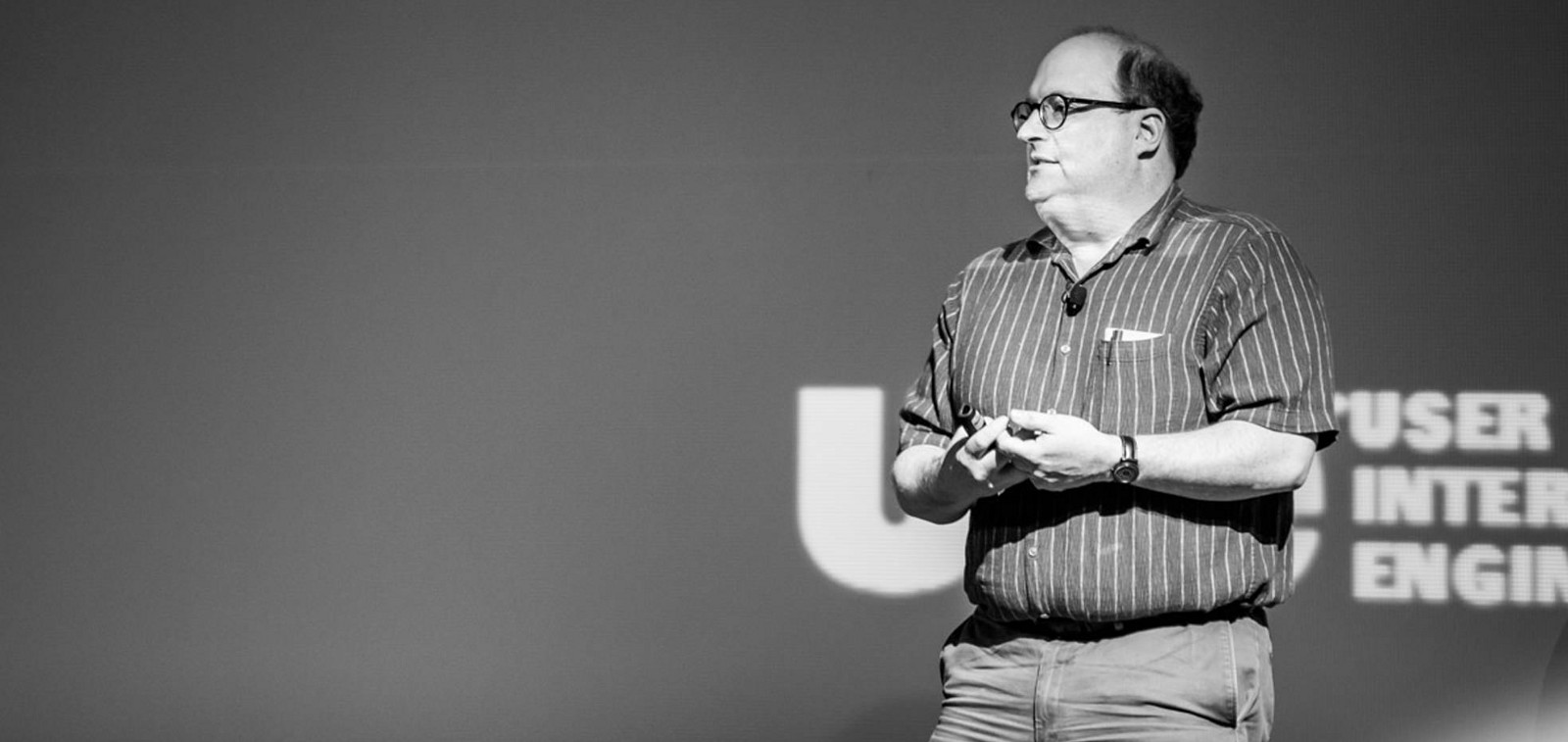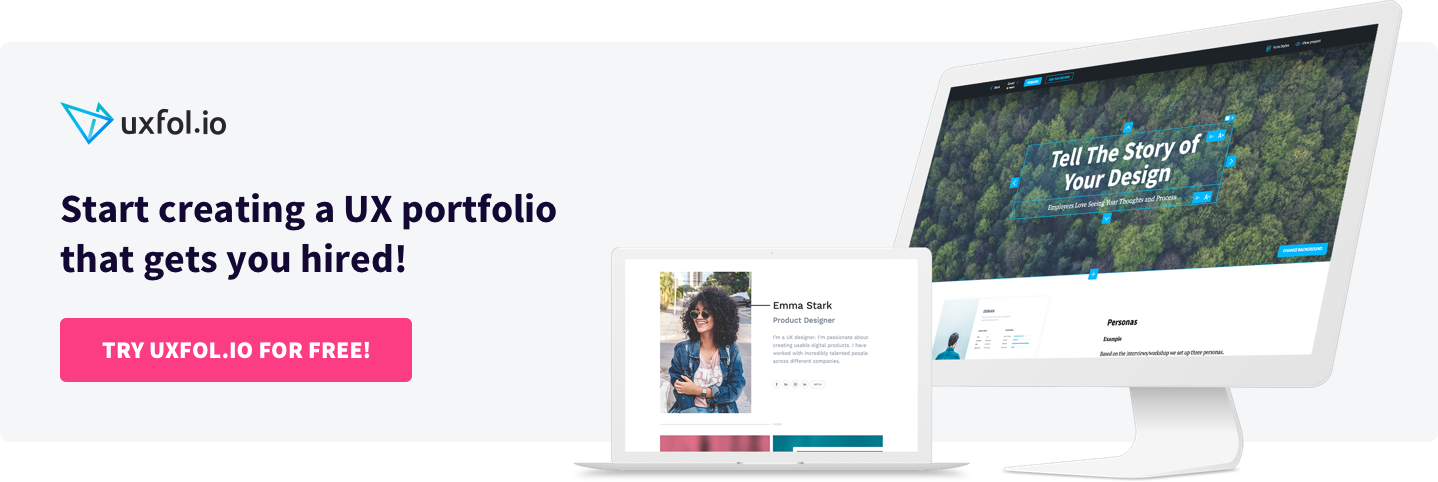Jared Spool has become a familiar name for many of us in UX. He has been working in the usability and design fields since 1978. He runs his own consultancy, UIE, and also founded the Center Centre, a brick-and-mortar school for UX professionals. He has given keynote speeches at many UX conferences around the globe. He also advises companies on how to recruit designers and build their design teams.
In this interview, I talked with Jared about how to build a UX portfolio, and he shared many useful tips with us.

Hi Jared, great to have you on our blog. Let’s just jump right into the middle. I know you’ve recruited designers many times during your career. So what do you search for when you look at a designer’s portfolio?
Well, the work starts before I have the portfolio in my hands. That’s important. I can’t pick up any portfolio and just tell if it is a good one or not. The portfolio has to match the job position. If it doesn’t match the job position, it still can be a good portfolio. It’s just not a good fit.
“Is this the person who can do the job? What evidence is there? […] I want to hear the story how this happened.”
So what I ask when I look at a portfolio: Is this the person who can do the job? What evidence is there? So portfolios for me are a way to collect evidence. Usually partial evidence, because I have to talk to the person to understand what I see.
If the job is to build a design system and roll it out to all the product teams in the company, I want to see in the portfolio that the candidate designed a design system before and rolled it out. And I want to hear the story how this happened. The candidate can be an amazing designer who could build a beautiful website, but if the job is to roll out a design system, the website doesn’t matter.
That makes sense. And do you see any trends? What are the skills that companies are hunting for nowadays?
I think it completely depends on the position. I help companies all over the world and some need user research skills while some others need visual design skills. It depends on who else they already have. I usually don’t need somebody who is identical to the people I have, but almost always I need someone who is very different from them. If I have a team where nobody is strong on visual design, I need somebody who is strong on visual design.
How can designers evaluate their skills? And how can they build a UX portfolio that represent their UX designer skills?
The easiest way to evaluate your skills is to look at the types of things that you someday want to build, and ask yourself, “Do you know everything you need to know about building that thing?” Then break it down, figure out what you need to know, and go from there. Figure out what you can improve on.
“Make sure your resume, your portfolio, and all the design stories you want to talk about during the interviews are related to the position.”
You work with many companies, so you have a good overview of the market. How does the selection process look in these teams?
The best companies, the ones I’m working with to improve their hiring processes, always start on the position. So first you should go and find out what the position is, and make sure your resume, your portfolio, and all the design stories you want to talk about during the interviews are related to the position, and they are about comparable experience. Comparable experience is evidence that you can do the job because you have done it before.
And if I see that I have comparable experience, something that a company is looking for, how should I tell a design story about it?
Well, you want to start with the outcome, what was produced, and how it helped the business. And then you want to give a sense of time and depth.
“You should also talk about challenges. What made the project challenging and how did you overcome those challenges?”
Was this something you did on a weekend, or was this something you worked on for three years every day? You should talk about who else was involved and what was your role versus their role. And you should also talk about challenges. What made the project challenging and how did you overcome those challenges?
Do you have any advice for junior designers as well who just want to start up their UX careers? What would be your suggestions for them?
Well, it is going to take a while. You have to find a company that is interested in junior designers. Lots of companies aren’t. They just don’t have the resources for them. It’s because junior designers need more education. Most junior designers right out of school are not quite prepared to do work, they don’t have the skills yet. So the big thing when you are a junior designer is talking about how much you learned.
“[Juniors] send in portfolios with finished work, but they don’t talk about what they learned during the project, and how they learned to do that work. “
A mistake I see lots of junior designers do is they send in portfolios with finished work, but they don’t talk about what they learned during the project, and how they learned to do that work. Unless I’m going to have you do something identical to what’s in your portfolio, which the chances for are very slim as a junior designer, I need to know how you are going to learn the next thing that you don’t know anything about right now. So a junior designer’s portfolio should be about learning, how you go about learning all the things you did.
I’m glad you mentioned this case study mistake because this is something we always encourage designers on UXfolio to talk about: their learnings and not just the design deliverables. Thank you for the tips, I’m sure these will be helpful for many UX designers around the world.

So are you wondering how to build a UX portfolio Jared described? We will give you a hand!
In case you want to build the type of UX portfolio Jared talked about, UXfolio is a great platform for it.
We created our product, UXfolio to support UX professionals with portfolio building. It is super easy and quick to create a meaningful product design portfolio. It creates you your portfolio website (no coding, no hassle with hosting), it generates a nice front page, and it allows you to put together nice UX case studies in minutes. It also helps you do the UX portfolio copywriting part with great examples and guiding questions.
Start building your awesome portfolio now! And if you liked what you read here, give UXfolio a try.
